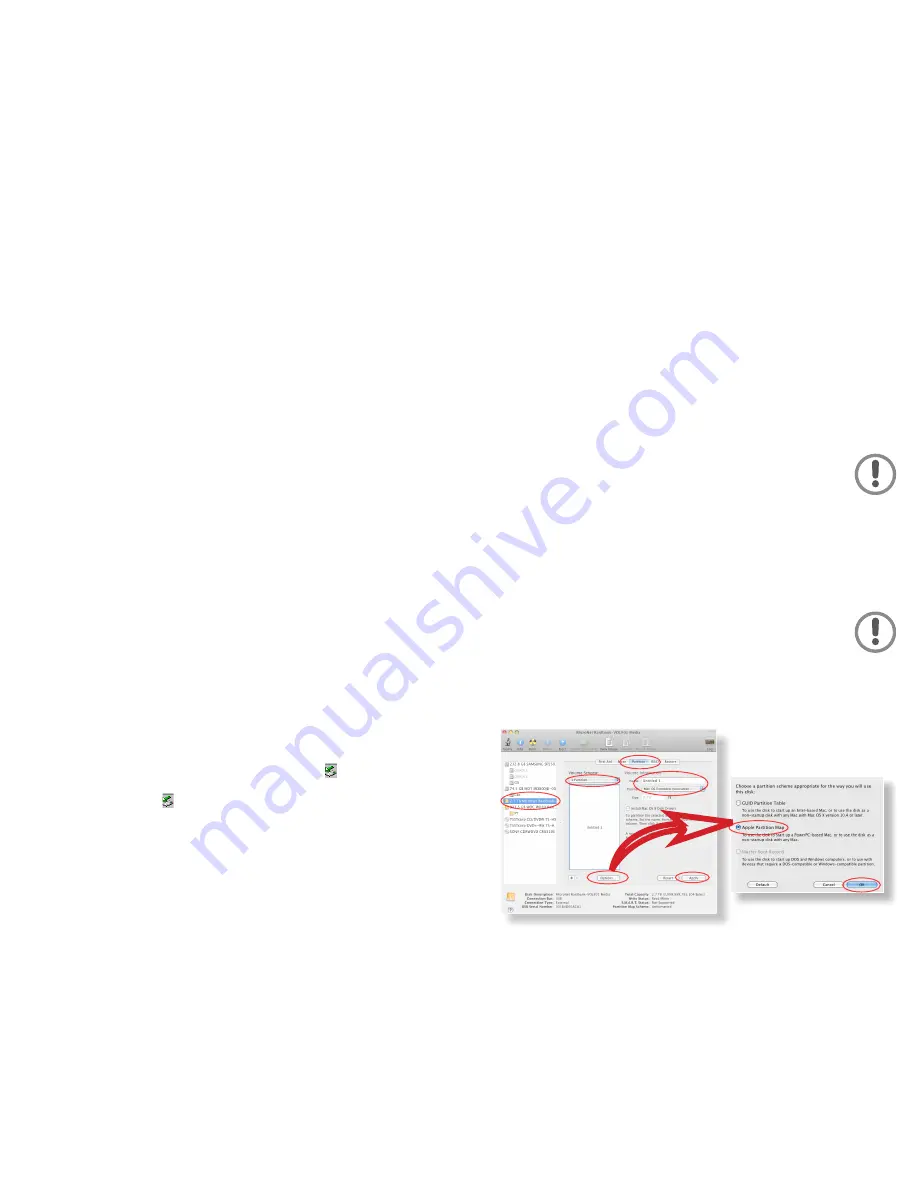
10
7
How to Safely
Dismount and Turn Off
Your G-Force3
What do 'mounting' and 'dismounting' mean? When a device
such as a hard drive is mounted, that means the computer
‘sees’ the device and is able to communicate with it. When
you dismount a device, the computer no longer sees it. The
device may still be running but the computer cannot access
it, as though the device no longer exists.
Never turn off or unplug a hard drive without dismounting
it first. Doing so could cause data on the drive to be lost or
damaged.
How to safely dismount and turn off the
drive with the computer running
Mac Users
Drag the icon for the external hard drive to the Trash. The drive will
dismount and you can then safely turn if off. You may then unplug
the power cord and data cable if you want to disconnect the drive.
PC Users
1. Locate the System Tray. The System Tray includes the
time display in the bottom right, and icons to the left of the
time. One of the icons will be an hot plug icon ( ).
2. Left-click on ( ). You will receive the alert message
“Safely Remove..” followed by the drive description and drive
letter for the device.
3. Left-click on the appropriate device (with the drive letter
matching the one used by the external hard drive). After a
few seconds, Windows will give you a message that it is safe
to remove the device.
Formatting Your Drive
The G-Force comes preformatted at the factory with the NTFS file
system, the native file system for Windows. Linux and Mac OSX
hosts require a third-party driver such as NTFS-3G to achieve full
read/write capability with NTFS volumes. If you intend to use this
drive exclusively on MacOSX it is advised to reformat your disk with
the HFS ("Mac Extended") file system.
Formatting a hard drive erases all data contained on it. Please
be sure to create a copy of the files you wish to keep to another
location before reformatting.
Formatting the drive in Mac OS X
1. Launch the “Disk Utility” application located in Applications/Utilities.
2. Highlight your new drive and select the “Partition” tab
3. Select the new partition map type.
4. For each partition in the volume scheme, select the desired
file system format and volume name (optional)
Although it is possible to format using the DOS file system, we
do not recommend this as an artificial capacity limit may be
imposed on the drive and performance will be unpredictable.
5. Click the “Options” button. Select “Apple Partition Map” in the
dialog box and click “OK”.
6. Click “Apply.” Your Fantom Drives G-Force is ready to use!
2
3
3
4
6
5










